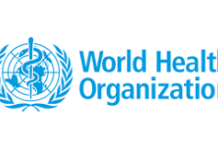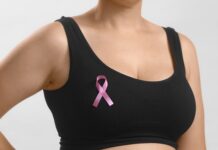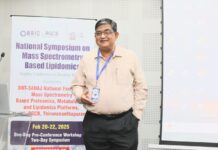Researchers at Cranfield University have created an innovative, cost-effective method for detecting biomarkers in wastewater using origami-inspired paper sensors, which can be analyzed with a mobile phone camera. This breakthrough technology could significantly enhance the ability to monitor infectious diseases and direct public health measures during future pandemics.
The study, titled “Paper Microfluidic Sentinel Sensor Enables Rapid and On-Site Wastewater Surveillance in Community Settings,” was published in Cell Reports Physical Science and included collaboration with scientists from the University of Glasgow and Zhejiang University in China.
Monitoring wastewater is a key strategy for gauging the spread of infectious diseases within populations. By collecting samples from various wastewater treatment plants, researchers can identify areas with the highest infection rates. This approach was notably used during the COVID-19 pandemic to track community transmission and inform public health decisions.
As reported by medicalxpress.com, the development of these sentinel sensors was led by Professor Zhugen Yang, an expert in biosensing and environmental health at Cranfield University. This new technology builds on his previous work from 2020, in which he designed a paper-based test to detect SARS-CoV-2, Influenza A, and Influenza B in wastewater using a mobile phone camera or UV light.
Traditionally, the most reliable methods for analyzing wastewater samples, such as polymerase chain reaction (PCR) tests, require specialized equipment and trained personnel in centralized laboratories. These processes involve collecting, storing, and transporting samples under controlled conditions, which can be time-consuming and costly. In contrast, the new method is rapid, user-friendly, and portable. Wastewater samples are applied to a wax-printed paper sheet, folded in an ‘origami’ style. The paper is treated with chemicals that react to specific disease markers, producing a fluorescent signal that can be captured and analyzed using a mobile phone camera, delivering results in real-time.
Professor Yang’s team tested this method as part of the national COVID-19 wastewater surveillance program in 2021, conducting field trials at four quarantine hotels near Heathrow Airport. Unlike the PCR test, which takes around four hours, this new test provided results in less than 90 minutes using minimal equipment, demonstrating accuracy comparable to PCR testing but at a fraction of the cost. It also proved to be a valuable early warning tool for detecting disease outbreaks, particularly in resource-limited settings due to its low cost, simplicity, and rapid results.
Professor Yang remarked, “During COVID-19, we demonstrated that rapid community sewage analysis is an effective way to monitor infectious diseases and manage public health. Our simple, low-cost test—priced at just £1—uses the camera function on a standard mobile phone, making it widely accessible. This could revolutionize how we predict disease outbreaks and protect public health in future pandemics.”
The significance of this device was recognized at the London Science Museum for its role in the National Wastewater Surveillance Program during the COVID-19 pandemic. Further development of this technology is being funded by the Leverhulme Trust Research Leadership Scheme and the Biotechnology and Biological Sciences Research Council. In the future, this device could potentially be used to track emerging variants, assess their spread within communities, and monitor antimicrobial resistance from a One Health perspective.
























